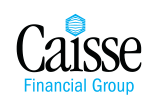
In today’s digital age, fraudsters are constantly finding new ways to exploit unsuspecting individuals. From phishing emails to identity theft, fraud comes in many forms and can wreak havoc on your finances and personal information. That’s why it’s crucial to be vigilant and proactive in protecting yourself against fraud. In this article, we’ll discuss what fraud looks like, how you can reduce your risk as a banking customer, and what steps to take if you become a victim.
What to Look For
Fraud can take various forms, but some common types include:
- Spoofing: Swindlers create spoofing websites imitating legitimate websites to try and trick you into sharing sensitive information. If using Caisse.biz as an example, a spoofing site may use a URL like Ca1sse.biz or Caissse.biz.
- Phishing: Fraudsters send emails or text messages pretending to be from legitimate companies, asking for sensitive information such as passwords or account numbers.
- Identity Theft: Thieves steal personal information, such as your Social Insurance Number or driver’s license numbers, to commit fraud in your name.
- Credit Card Fraud: Criminals use stolen credit card information to make unauthorized purchases.
- Investment Scams: Scammers promise high returns with little risk, enticing victims to invest in fraudulent schemes.
These are just a few examples, but fraud can manifest in countless other ways. It’s essential to stay informed and cautious to protect yourself from falling victim.
Here’s a snapshot showing the impact of fraud in Canada in 2023:
- Reports processed: 62,365 (92,078 in 2022)
- Victims of fraud: 41,111 (57,578 in 2022)
- Lost to fraud: $554 M ($531 M in 2022)
Despite your best efforts, fraud can still happen. If you suspect fraudulent activity on your accounts, it’s crucial to act quickly.
Here’s What to Do
Gather all information about the fraud:
- Documents
- Receipts
- Copies of emails and/or text messages
Contact your financial institution(s):
- Place flags on all of your accounts & report the fraud to both credit bureaus (Equifax and TransUnion)
- Change all of your passwords
- Report the incident to your local police and get a file number for future reference.
Contact the Canadian Anti-Fraud Centre toll free at 1-888-495-8501 or through the Fraud Reporting System.
For fraud that took place online through a website:
- Report the incident directly to the administrators of the website. You can do so through a link such as “Report Abuse” or “Report an Ad”.
Protect Yourself from Future Fraud
By adopting these practices, you can significantly reduce your risk of falling victim to fraud and protect your hard-earned money, and identity:
- Enroll in 2-Step Verification (2SV) whenever it is offered.
- Bookmark your legitimate online banking login page to avoid accidentally stumbling on upon spoofing website.
- Enable all available alerts with the online banking and mobile applications, including the login alert as this notifies you immediately when someone logs into your account.
- Continue to monitor your accounts closely for any further signs of fraudulent activity.
- Tell family, friends, neighbours and co-workers about your experience. You may prevent someone else from becoming a victim.
- Use Strong Passwords: Create unique, complex passwords for your online banking accounts and change them regularly.
- Be Wary of Suspicious Emails and Calls: Avoid clicking on links or providing personal information in response to unsolicited communications.
- Use secure and trusted online payment options such as PayPal
- Enable Two-Factor Authentication: adds an extra layer of security to your accounts by requiring a second form of verification, such as a code sent to your phone.
- Shred Sensitive Documents: Dispose of documents containing personal or financial information securely to prevent identity theft.
Staying informed and proactive is key to protecting yourself from fraud as a banking customer. By recognizing the signs of fraud, implementing security measures, and knowing what to do if you become a victim, you can safeguard your financial well-being and peace of mind.
Remember, your security is our priority. If you have any concerns or questions about fraud prevention, please don’t hesitate to contact us and stay fraud smart.
Learn More about Fraud and Cyber Security


